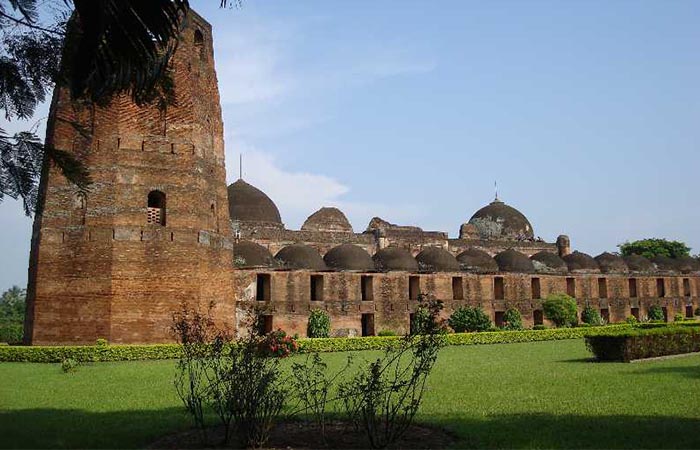
Sited the along the Eastern Bank of Bhagirathi, a tributary of river Ganga, is a city named Murshidabad of West Bengal. Murshidabad was named after the Dewan of Bengal, Orissa and Bihar, Nawab Murshid Quli Khan. It is a historical significant place where in 1757 the British defeated Siraj–ud–Daula in the Battle of Plassey. Murshidabad is the city of magnificence and famous in the region for its silk. It was entitled as the capital city of Bengal in 1717 and later in 1773 British shifted the capital to Kolkata. At the present time Murshidabad is the centre of agriculture, handicrafts (ivory carving), and sericulture. Till date this historic town yields the memories of Nawab Murshid Quli Khan in the ancient mosque, and tombs. Murshidabad still retains its craving and weaving industries. Murshidabad is dotted with historic significant monuments and places due to which it is often known as the Paradise of Historian. The lingering essence of Regal Era and British Raj till date can be felt while strolling in the well manicured gardens and grandiose structure of Murshidabad.
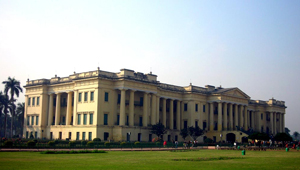
It is the most important and iconic attraction of Murshidabad. Hazarduari Palace was built in 1837 by Duncan McLeod for the Nawab Najim Humaun Jah. Housing more than 3000 artifacts, Hazarduari Palace Museum is the biggest site museum of Archeological Survey of India. The palace has 1000 doors out of which 100 doors are the fake. The crystal chandelier hanging in the Durbar Hall of Hazarduari Palace is the second largest chandelier in the world after the one in Buckingham Palace.
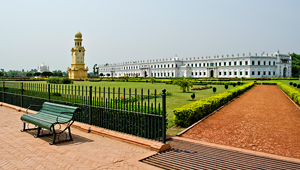
Overlooking the iconic Hazarduari Palace Museum is the largest Shia Muslim congregation hall Nizamat Imambara. It was built in 1847 after the old Imambara constructed under the commandment of Nawab Siraj-ud-Daula was completely destroyed by the fire. The new Imambara was built by Nawab Nazim Mansur Ali Khan under the supervision of Sadeq Ali Khan.
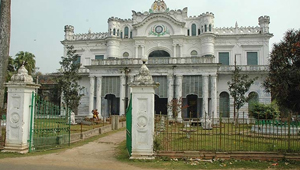
Wasef Manzil also known as Wasif Manzil or the New Palace sited close to Hazarduari Palace is said to be the abode of Nawabs. Dotted with marble staircase and statues Wasef Manzil was built by Nawab Wasif Ali Mirza under the supervision of Mr. Vivian and Surendra Bara. Maintained by Archeological Survey of India, Wasef Manzil is now converted into a museum. Visitors can relish the details of finely crafted walls and well manicured while visiting to Wasef Manzil.
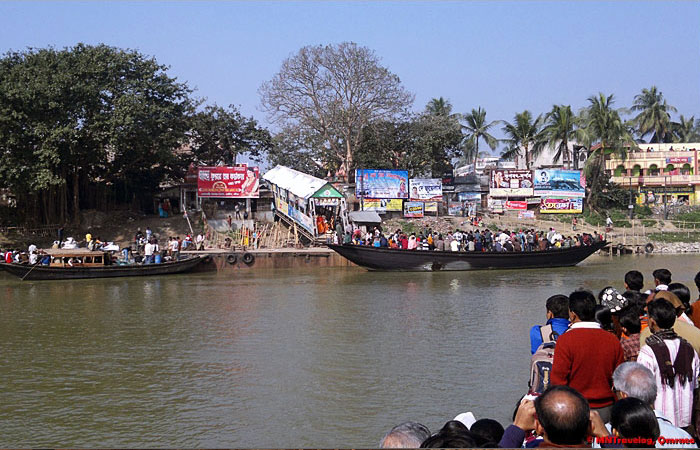
It is an ideal place for picnicking and boating in Murshidabad. Jalangi River is originated from Ganges River. Along the river bank of Jalangi is a quaint settlement called Ghurni. It is famous for its clay doll and the locals often calls the place Krishnanagar clay dolls.
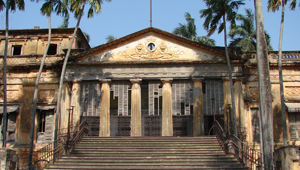
Built in 1724 under the commandment of Murshi Quli Khan is Nashipur Palace of also known as Nashipur Rajbati. Formerly known as the Mahimapur Raj Bari, Nashipur Palace is one of the prime attractions of Murshidabad. It houses Ramachandra Temple one of the largest temples of Murshidabad. Nashipur Palace was often referred as the miniature version of Hazarduari Palace.
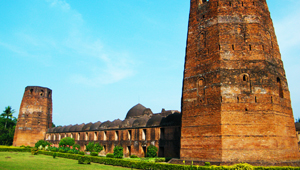
Located in the north eastern side of Murshidabad is the Katra Masjid. Built in 1723-1724 Katra Masjid is a mosque and the tomb of Nawab Murshid Quli Khan. The most striking feature of Katra Masjid is the two large corner towers having loopholes for musketry. It is maintained by the Archeological Survey of India.
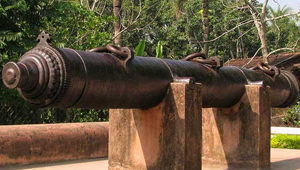
Placed in the Topekhana is the most magnificent canon of Murshidabad named Jahan Kosha Canon. Topekhana was the Nawab’s Artillery Park. The canon was built in 1637 AD by craftsman Janardan Karmakar of Dhaka under the instructions of Daroga Shree Mohammad and under the supervision of Hara Ballav Das. The name Jahan Kosha stands for the Destroyer of the World. Weighing more than 7tones the canon is made out of 8metals or ashtadhatu.
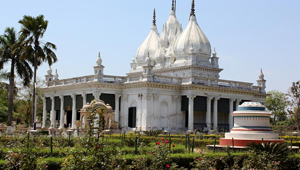
Situated at a distance of 5km from Hazarduari Palace is the Kathgola also known as Kathgola Palace or Kathgola Garden or Kathgola Temple. It was built by Lakshmipat Singh Dugar. Earlier in the Kathgola Garden black roses were grown but now only mango trees can be seen here. The four storey grandiose palace of Kathgola is known for housing many precious artifacts like finely crafted mirror studded with exquisite stone, valuable paintings, and priceless furniture.
Autumn season from October to Mid November and Winter Season Mid November to March is the best time to visit and enjoy the beauty of this ancient town Murshidabad.
Quick Enquiry